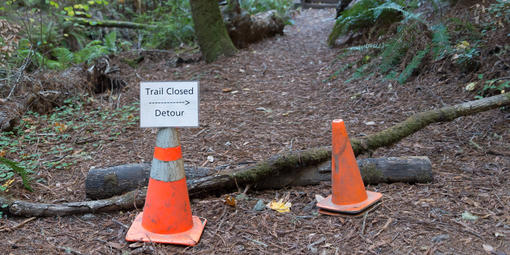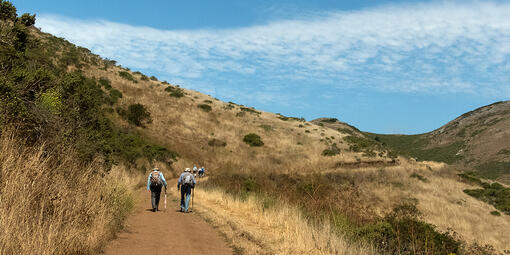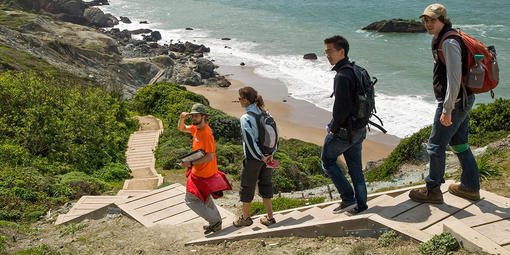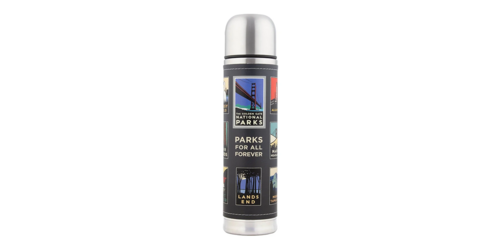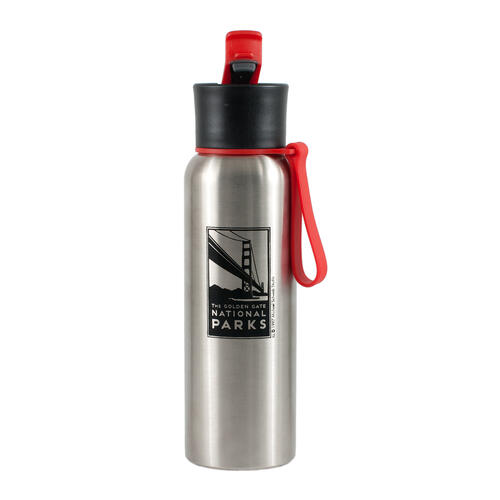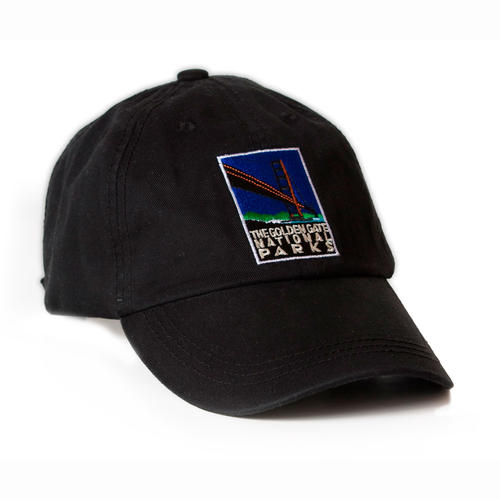Sometimes, the hardest part about getting out into the parks is knowing where to start. With so many sites, scenes, and activities within the Golden Gate National Recreation Area (GGNRA), it’s easy to feel overwhelmed.
Getting out into nature should be fun, accessible, and affordable. That’s why we’re here to help with a guide on how to plan and prepare for the most popular activity in the parks: day hiking.
What is day hiking?
Day hiking can include short strolls around Presidio Tunnel Tops or epic 8-hour treks up Mt. Tamalpais. Unless you’ve made a reservation at one of the four designated campgrounds in the GGNRA, any hike you’re planning in the GGRNA is a day hike.
Where do I start?
The first step is to pick a trail. There are many to choose from in the GGNRA, but don’t overthink it. As Parks Conservancy Youth Programs Coordinator Aimes Tam puts it, “the beautiful thing about hiking is you get to choose what you like!” Use our trails directory to help find a trail that works for your needs.
- Broadly, think about whether you want to hike north of San Francisco, in San Francisco, or south of San Francisco.
- What type of sun coverage do you want? Full sun on a rolling hillside or shoreline? Full or partial shade under a canopy of a redwood forest?
You can pick a day hike in the GGNRA to fit any time budget, from 10 minutes to 10 hours.
The GGNRA contains incredibly diverse ecosystems, geological formations, and most importantly for us day hikers, microclimates!
Even if it’s sunny and warm at home, conditions on the trail you’re planning to hike may be completely different. Look at the weather forecast before you leave home and, if you have cellular service, before you begin your hike.
If the weather is inclement, it’s best to stay at home to protect yourself and erosion-prone trails.
One of the most unique aspects about the GGNRA is you don’t need a car to get into the park. Check out our Transit to Trails guide for a list of great transit-accessible hikes. You can also use our Trip Planner to find the best transportation options to your desired destination.
Easy
Lands End Trail via Sutro Baths and Coastal Trail
Moderate
Hard
Dipsea to Steep Ravine and Matt Davis Trail Loop Trail
Aimes Tam: “One of my favorite day hikes in the GGNRA is the Dipsea to Steep Ravine and Matt Davis Loop trail! It's about 7 miles, gaining around 1,700 feet of elevation starting close to Stinson Beach, hiking up a vista through coastal scrub ecosystem, and through riparian ecosystem following Webb Creek and then back down with break taking views of Bolinas! It's so green and lush and I get to appreciate a diversity of ecosystems!”
Packing 101
Packing for a day hike can feel like a personality test. Some hikers pack “ultra-light,” bringing along high-tech clothing, astronaut-approved freeze-dried snacks, and little else. Others (and it’s OK if this is you) are “maximalists,” cramming their packs with every conceivable item they might need on a two-hour hike. No matter which type of hiker you are, you likely already own most of the equipment you need to get out on the trail.
No! You don’t have to buy special hiking equipment to get out on the trail. For most day hikes, you likely have everything you need at home — like a regular backpack, a pair of old sneakers, and workout clothing. If you are looking for new gear, we have some recommendations for you below.
When packing, consider factors like the weather and the difficulty and duration of your hike. While every hike and everyone’s needs are different, in general, every well-equipped hiker should carry the following:
Hiking backpack
A good hiking pack is comfortable and evenly balances its contents, so you’re not left sore the day after a hike. You can use a backpack, fanny pack, or any other bag-which-holds-things contraption, as long as it’s sturdy and big enough to fit your stuff.
Weather-appropriate clothes
Dress in layers! It’s better to wear several thin layers (like an undershirt, a light sweater, and a jacket) than one heavy coat, for instance. Once you get moving on the trail, you’re likely to get warm and want to take off layers, or put one on when the fog rolls in. Consider wearing base layers of synthetic materials rather than cotton. They will dry much quicker, keeping you comfortable throughout your hike.
Even on hot days, wear long-sleeved shirts and pants to protect you from the sun, bugs, and poison oak.
Footwear
For many trails in the GGNRA, sturdy and well-fitting sneakers will do for most people. However, if you’re hiking a trail with loose rocks, slippery surfaces, mud, or steep climbs, consider investing in a pair of hiking boots or trail runners to provide more grip and support.
Hydration
Many trailheads within the GGNRA have bathrooms but no running water, so you should plan to bring all the water you will need for your day hike. There’s no firm rule on how much water to bring but consider bringing at least 0.5L for every hour you plan on hiking, and more if it’s hot out or if you’re going on a particularly strenuous hike.
Nutrition
There’s nothing worse than being hangry on the trail (well, there’s something worse: being WITH someone hangry!). Luckily, it's easy to prevent such a catastrophe by packing snacks and meals you already love. You don’t have to bring special “trail food.” Parks Conservancy Youth Programs Coordinator Aimes Tam brings a fun mix of snacks for her hiking groups like juice boxes, Asian crackers, samosa chips, or even a whole picnic board of foods from around the world.
Some spots in the GGNRA (like Crissy Field, Ocean Beach, and the Presidio) are close to food vendors. Stop by the Warming Hut at Crissy Field or Ill Parco Restaurant at Presidio Tunnel Tops for a well-deserved treat!
Sun protection - Sunglasses, sunscreen, and clothing
Most trails in the park have sections exposed to the sun, so it’s important you bring appropriate sun-protection equipment like a hat, sunglasses, and sunscreen. Clothing, like sun protection-rated shirts and pants, should also be considered. With sunscreen, don’t forget to reapply often!
First-Aid Supplies
We hope you won’t need it, but if you do, a first aid kit is a (literal) lifesaver. You can put together your own kit or purchase one. Either way, don’t leave home without it.
A first aid kit will include bandages, antibiotic ointment, blister treatment, pain and burn relievers, and any personal medications you may need.
Navigation – maps, GPS, and a compasses
Even though trails within the GGNRA are clearly signed, it’s still possible to get lost. That’s why it’s important to always stay on official marked trails and bring navigation aids like maps, a compass, or even a GPS unit with you.
Don’t rely on your phone to get you out of a tough situation. Cellular service can be spotty or non-existent within the GGNRA. Pick up a trail map at a ranger station or trailhead, or screenshot one on your (charged) phone to make sure you won’t get lost on the trail.
Illumination – headlamp or flashlight
It’s always a good idea to have an illumination source with you. Just don’t forget to charge your flashlight or headlamp before you hit the trail.
Once you’ve packed the essentials, you can make choices about what other items you’d use on the trail. Everyone’s “not-essential-but-definitely-essential” list will be different.
Aimes Tam, for instance, will bring binoculars and bird and wildflower field guides on normal day hikes, and a field journal, a watercolor palette, and even a light sit pad for extra comfort on long, “luxurious” day hikes featuring breaks.
Some other items which you may want to consider for your hike:
Hand sanitizer
A paper or plastic bag to hold your trash
This can be the same bag you pack your lunch in and can double as your trash bag.
Binoculars
Great for birding, or for staring off into the parks’ incredible vistas.
Trekking poles
Some people prefer the stability of hiking with trekking poles. You may be one of them.
Knife or multi-tool
Always useful in an emergency!
Field guides
Identifying the plants, animals, and geological features you see on your hike can be an extremely rewarding part of any outdoor excursion.
Creativity: Writing materials and art supplies
Nature can be a profound source of creative inspiration. Paint, draw, or write about what you see!
Are there rules I should follow?
Treat the land, plants and critters, and other park users with respect. Pay attention to signage at the trailhead or on the trail. Always stay on official, marked pathways. Do not collect anything from the parks (leave those wildflowers for others to enjoy!) Pack out everything you bring with you, including all your trash. Yield to horses and other hikers wishing to pass. Enjoy the sounds of nature and keep your portable speaker at home. We hope you have a great time out in the parks!
